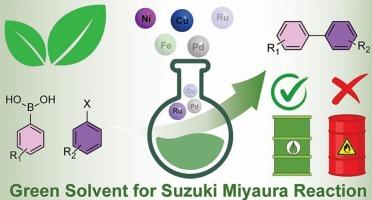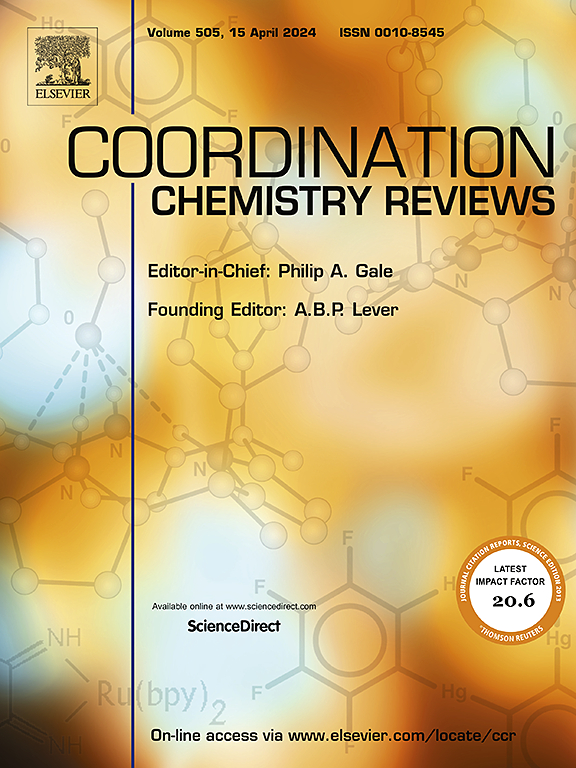Suzuki Miyaura反应中纳米催化剂的绿色介质
IF 20.3
1区 化学
Q1 CHEMISTRY, INORGANIC & NUCLEAR
引用次数: 0
摘要
在过去十年中,铃木-宫浦反应及其应用的指数级增长充分说明了它在药品、聚合物、材料、精细化学品和天然产物的总合成生产中的效率和有效性。使用毒性小、生物相容性好的普通金属催化剂;负载型催化剂和纳米催化剂的部署;毒性较小的亲电伴侣的参与;采用生物相容性载体和更环保的反应介质是实现更绿色可持续SM反应的重要策略。考虑到SM对工业、环境和公众的好处,以及有机合成过程中大量使用溶剂,这对环境和健康产生了巨大影响,因此需要进一步探索各种新的支持纳米催化系统和良性介质,以全面掌握众多更环保的方法。本综述涵盖了2020年至2024年间发表的研究,讨论了在一系列更环保的反应介质中使用有效负载纳米催化剂的SM反应。本文章由计算机程序翻译,如有差异,请以英文原文为准。


Greener media for nano catalysts in Suzuki Miyaura reaction
The exponential growth pertaining to the Suzuki–Miyaura(SM) reaction and its appliances in the last decade speaks volumes about its efficiency and effectiveness in the production of pharmaceuticals, polymers, materials, fine chemicals, and the total synthesis of natural products. The usage of less toxic, biocompatible, and common coinage metal catalysts; the deployment of supported catalysts and nano catalysts; the involvement of less toxic electrophilic partners; employment of biocompatible supports, and greener reaction media are prominent strategies for greener and sustainable SM reaction. Given the advantages for industry, the environment, and the public, and since solvents are used in larger quantities during organic synthesis, which contributes to a huge impact on the environment and health, a thorough grasp of the numerous greener approaches focused on a variety of newer supported nano catalytic systems and benign media for SM reaction need to be explored further. This review encompasses research published between 2020 and 2024, that discusses SM reaction with effectually supported nano catalysts in a range of greener reaction media.
求助全文
通过发布文献求助,成功后即可免费获取论文全文。
去求助
来源期刊

Coordination Chemistry Reviews
化学-无机化学与核化学
CiteScore
34.30
自引率
5.30%
发文量
457
审稿时长
54 days
期刊介绍:
Coordination Chemistry Reviews offers rapid publication of review articles on current and significant topics in coordination chemistry, encompassing organometallic, supramolecular, theoretical, and bioinorganic chemistry. It also covers catalysis, materials chemistry, and metal-organic frameworks from a coordination chemistry perspective. Reviews summarize recent developments or discuss specific techniques, welcoming contributions from both established and emerging researchers.
The journal releases special issues on timely subjects, including those featuring contributions from specific regions or conferences. Occasional full-length book articles are also featured. Additionally, special volumes cover annual reviews of main group chemistry, transition metal group chemistry, and organometallic chemistry. These comprehensive reviews are vital resources for those engaged in coordination chemistry, further establishing Coordination Chemistry Reviews as a hub for insightful surveys in inorganic and physical inorganic chemistry.
 求助内容:
求助内容: 应助结果提醒方式:
应助结果提醒方式:


